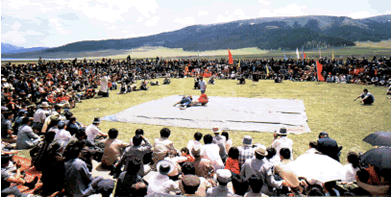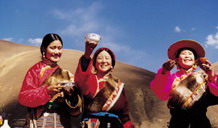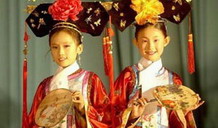Nadam Festival
 In Mongolian the wordnadammeans "amusement and entertainment, or game," and that is certainly what this festival is all about. It takes place during the seventh or eighth lunar month, "when the livestock have become stout and strong, the meadows are rich, and drinking water abounds."
In Mongolian the wordnadammeans "amusement and entertainment, or game," and that is certainly what this festival is all about. It takes place during the seventh or eighth lunar month, "when the livestock have become stout and strong, the meadows are rich, and drinking water abounds."
TheNadam Festivalis a traditional occasion for Mongols to get together for a few days of festivity. In the past, herdsmen in the region gathered in summer to sacrifice to celestial beings as well as to amuse themselves in celebration of a thriving animal husbandry. After the birth of thePeople's Republic of Chinain 1949, the Nadam Festival became a ten-day event that was held during the summer-autumn interval. Now the festival has acquired a new name, the "Nadam Grassland Tourist Festival."
The Nadam Festival dates back about 2,000 years, and is believed to have originated in Mongolia somewhere between 200 BC and 200 AD.Horse racing, wrestling, andarcheryare three of the most popular and traditional activities of the fair, while singing and dancing in traditional style are also a great highlight. In Mongolian tradition, a man can prove his worth by impressing with his skill in horse riding, archery, or wrestling, which are considered the "Three Manly Virtues" of the Mongol men.
Nowadays modern activities such as track and field sports, equestrian polo, horsemanship, tug-of-war, basketball, volleyball, and even motorcycling are included in the celebration of the Nadam Festival. So if you have free time during July and August, this is a great time to join in the fun and traditional pastimes with the local Mongolian people.
 Horse racing
Horse racing
Horse racing of Mongol can generally be divided into two: walking race and galloping.
In walking horse racing, horses compete in speed, resistance, steadiness and beauty via running with alternating side steps (the front hoofs and hind hoofs move in turns). The horses for racing are generally older than five years and the riders are always adults. The race require a highly lofty horsemanship so that the rider is able to rein the horse to walk steadily, beautifully, and as fast as possible, without running.






